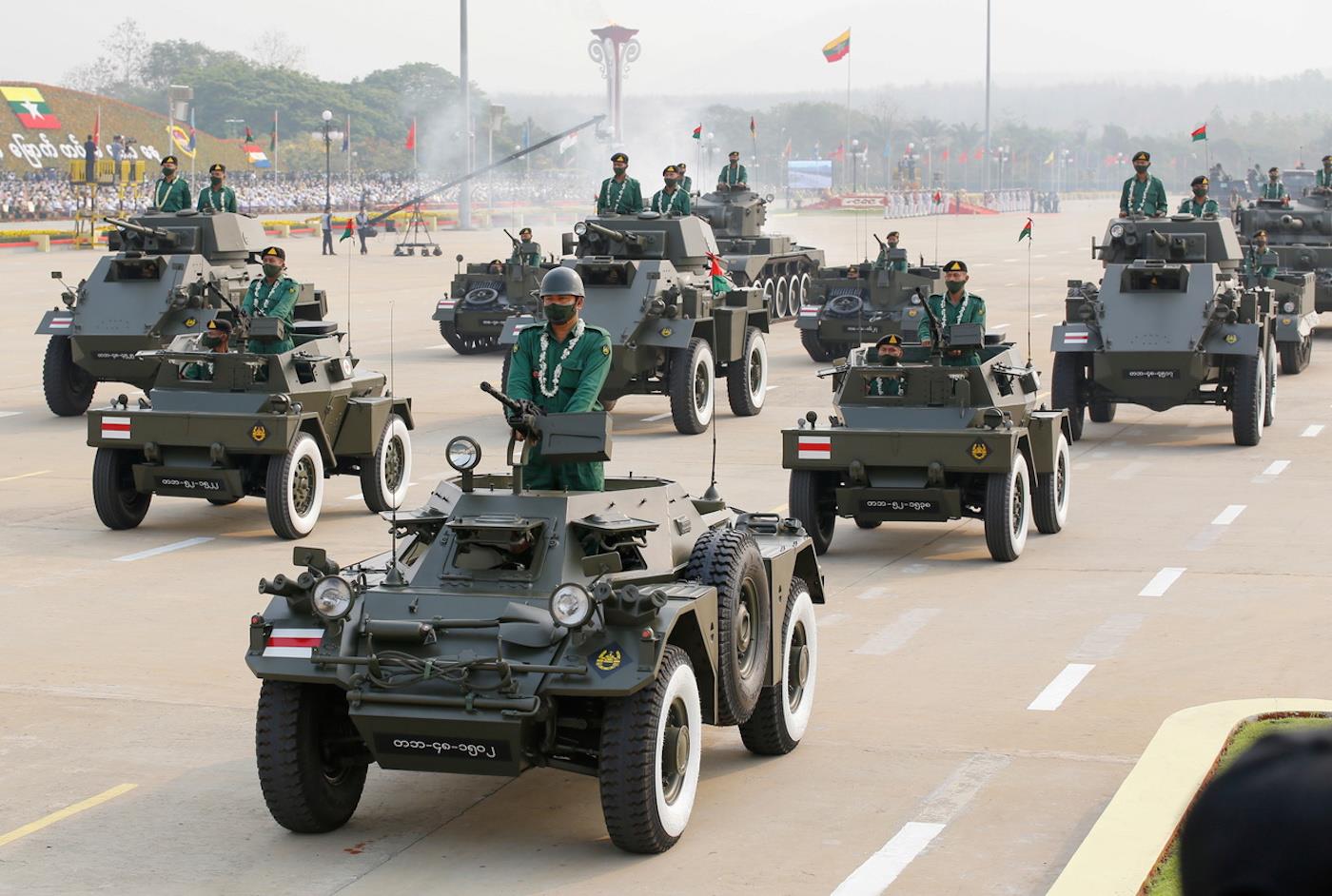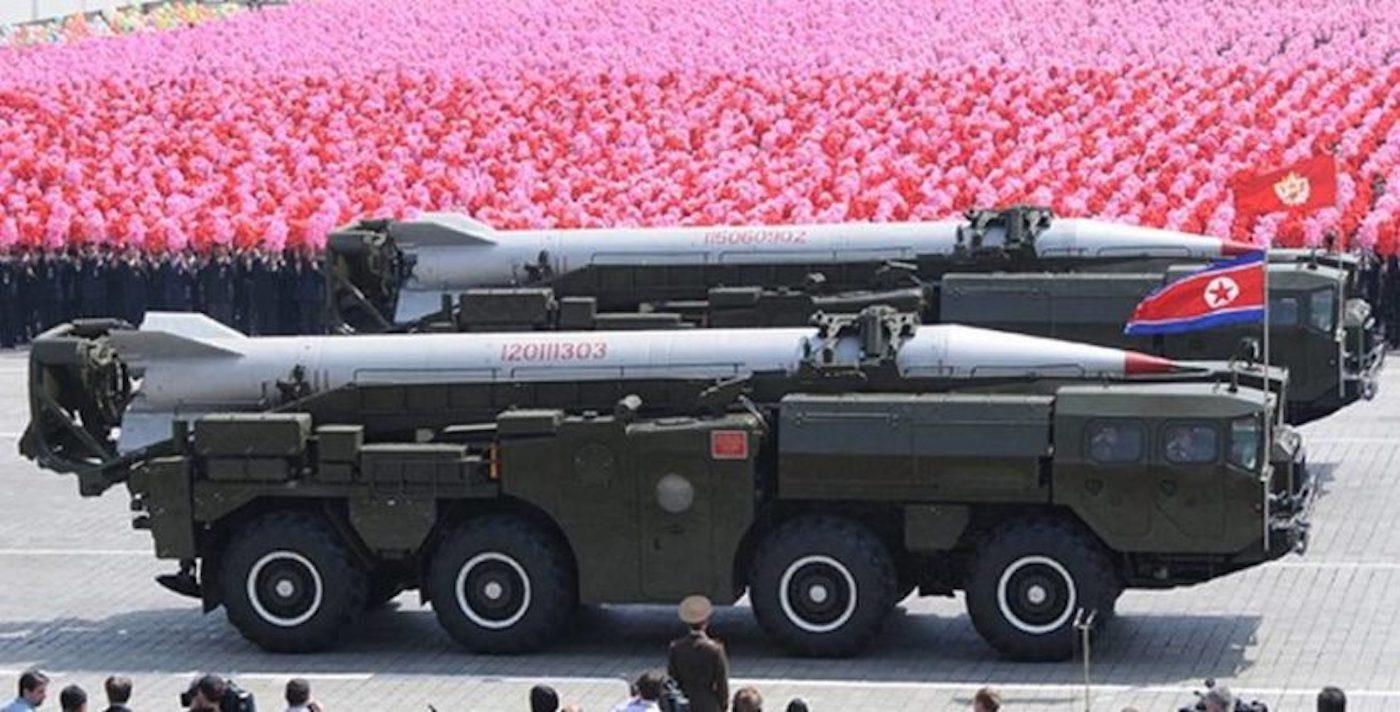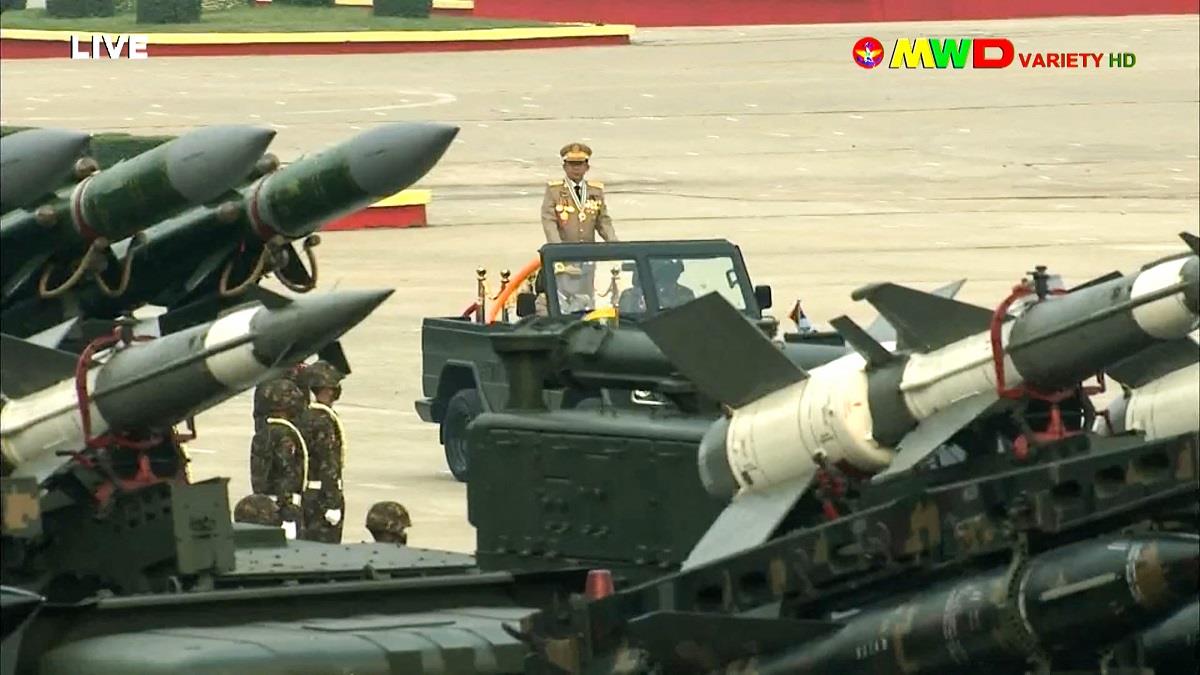(MENAFN- Asia Times)
CHIANG MAI – With Myanmar regaining its past pariah status after last year's democracy-suspending coup and future arms supplies from Russia in jeopardy due to the war in Ukraine, it is hardly surprising that the top brass is turning back to one of its trusted ex-military allies: North Korea.
According to a Yangon-based independent research group that monitors the Myanmar military and has conducted extensive interviews with former and serving officers, Myanmar-North Korea relations started to return to normal after the coup.
And the two isolated nations' main field of cooperation appears to be missile development, the same local research group says.
Myanmar began receiving ballistic missile technology from North Korea in 2008 and more than 20 Korean missile specialists were in the country until early 2015. It is uncertain whether some of them have returned, but technology and know-how are certainly being transferred, the sources say.
It is also known that 31 Myanmar military technicians were sent to North Korea for a two-month training course in 2015 after Myanmar was supposed to have severed relations with Pyongyang.
Myanmar's military partnership with North Korea was one of the most important issues that prompted the United States and the West to change its Myanmar policy from boycotts and sanctions to engagement in the early 2010s.
Then, normal relations with the West could only be restored if Myanmar severed its relations with North Korea and showed signs of political opening. When that was done under ex-general Thein Sein's 2011-2016 presidency, Myanmar swiftly shifted changed from being an international outcast to a new darling of the West.
Last year's bloody coup has set the clock back to the darkest years of absolute military rule, and with it has come renewed sanctions imposed by the West, including targeted measures against individual generals and military business interests.
That means the Myanmar military once again has no qualms about cooperating with likewise sanctioned North Korea.
The joint research and development is reportedly being carried out at several of the country's weapons factories, known by their Myanmar acronym“ka pa sa”, (karweye puitsu setyoun), or the Directorate of Defense Industries.

Myanmar's Tatmadaw flexes in an Armed Forces Day parade in Naypyitaw, March 27, 2021. Photo: Agencies
There are 38 such facilities scattered across the country, with the main base for missile research known as ka pa sa 23 in Gangaw township in Magway Region. Construction of the facility began in 2007 and missile development under the supervision of North Korean technicians commenced in 2010.
The facility now employs 700 technicians, officers and soldiers and work continues with and without North Koreans being present, according to sources who insisted on anonymity because of the sensitivity of the research being conducted.
The sources say there are three types of missiles currently under development. It is not clear what the designations used by the Myanmar military — SS/N-5, CK 20 and CK 21 – mean or indicate but the first appears to be modeled after a Russian missile known as R-21 which is launched from submarines.
In North Korea, it was used for the design of its Rodong-1 missile and it may be the prototype for the missile that Myanmar is developing. The other missile, CK 20, is a guided missile that can travel up to 130 kilometers while the CK 21, is meant to be a ballistic missile with a range of 700 kilometers.
Most of the raw material for the missile project is produced in Myanmar with some parts imported from North Korea via China. North Korean specialists are reportedly providing expertise in design and production.
None of the Myanmar officers involved in the projects speak Korean, but some of the North Koreans, who were in Myanmar for years, are said to be fluent in the Bamar language. While they always kept a low profile in Myanmar, it was not unusual to see them dining at the Pyongyang Koryo restaurant, a North Korean eatery in Yangon, that was eventually closed in 2018.
Research and development at ka pa sa 23 is supported by the production of parts at no less than four ka pa sa: 6, 10, 24 and 25. Ka pa sa 6 is located at Nyaung Chay Htauk village in Padaung Township, Bago Region.
The facility, which lies within the broad confines of a large and well-guarded defense industrial complex situated on the western bank of the Irrawaddy River near Pyay, covers 3,000 acres and employs at least 900 soldiers.
The military factory normally produces bullet casings for small arms and copper sheets. Its steel plant, meanwhile, is used for manufacturing arms and was built by Chinese technicians.
Ka pa sa 10 is situated near Konegyi village, Upper Minhla Township in Magway Region. More than 600 soldiers are working there on a 6,000-acre wide area. The factory was built in 1993 to produce surface-to-air missiles, air-to-air missiles and rockets.
Technicians from North Korea, China and Russia contributed to the construction of the facility and equipment was ordered reportedly from China and Russia and even South Korea. The construction of the factory and the installment of machinery were finished in 2003-2004.
Part of the facility is located underground and North Korean tunneling experts are reported to have assisted the Myanmar military in their construction. North Korean technicians were also reportedly taking part in the production of missiles and missile components at ka pa sa 10. Ka pa sa 22 and 24 are new facilities, both located near the Kyaw River in Magway Region's Pauk township.

North Korea's Rodong-1 missile on parade in Pyongyang in a file photo. Image: Facebook
Relations between Myanmar and North Korea were cordial until October 1983, when North Korean agents detonated a bomb in Myanmar's then capital Yangon, killing 18 high-ranking South Korean officials who were on a visit to the country, as well as three Myanmar citizens.
Bilateral contacts were resumed in 1993 via a series of secret meetings between diplomats in Thailand's capital Bangkok.
In June 1999, the Director of Procurement of the Burmese Armed Forces visited Pyongyang, followed by another secret trip in November 2000. In July 2003, a group of technicians from North Korea was seen at the Monkey Point naval base in Yangon, and aircraft from North Korea's national airline Air Koryo were observed landing at military airfields in central Burma.
The official resumption of ties came in April 2007. Confirmed arms shipments from North Korea to Myanmar were first limited to conventional weapons and technology transfers, including a major purchase of 130mm Type 59 field guns in 1999.
It was also confirmed that North Korean tunneling experts arrived in June 2006 at Burma's new capital Naypyitaw, where the country's military government is reported to have built an extensive underground bunker complex.
In November 2008, a high-level Burmese delegation led by General Shwe Mann, then number three in Myanmar's military hierarchy and now an opposition politician, visited North Korea.
During the visit, they were taken to see defense industries and expressed interest in buying radar systems and surface-to-air missiles as well as more sophisticated artillery from Pyongyang.
Around that same time, freighters from North Korea made unexplained visits to Myanmar ports, which raised suspicions of potentially more sophisticated arms deliveries. It is now clear that those shipments were connected to Myanmar's secret missile programs.
So why does the Myanmar military believe that it needs ballistic missiles? The country has no external enemies and missiles would be of no use in its internal counterinsurgency campaigns.

Coup leader General Min Aung Hlaing attends Armed Forces Day in the capital Naypyidaw. Photo: Myawaddy TV screengrab/AFP in Myanmar on March 27, 2021
The likely answer is that leaders of the immensely unpopular junta in Naypyitaw hope that such sophisticated weapons will keep the beleaguered officer corps loyal, satisfied and proud of belonging to a military equipped with such modern armaments.
But missile deals also make certain economic sense for both isolated and cash-strapped nations. While Russia and other suppliers of military hardware require payments in cash, North Korea has always been open to barter. That's significant considering both countries now face severe difficulties using normal banking channels.
North Korea needs food while Myanmar's generals seem to believe the procurement of advanced military equipment will keep them in power in the face of stiff local resistance. Food for guns was how the pariah states transacted in the past, and it is likely how their new missile deals are being carried out.
MENAFN23032022000159011032ID1103898291